Mary who? I tried to find her in my art reference books. Mary Seton Watts, wife of the Victorian establishment painter and sculptor George Frederic Watts (1817 – 1904), and he is definitely in the books. First British artist to have a gallery devoted just to him, it is claimed. His work, including his portrait of actress Ellen Terry, graces the national collections. His bronze intended to be set on the grave of Cecil Rhodes, now graces the Zimbabwe collection of colonial sculpture stored somewhere in that country. There maybe three of these monumental bronzes, the gesso original from which they were cast dominating part of the Watts Gallery collection.
The Watts Gallery in the village of Compton in Surrey is well worth a visit, not just for the collection of Watts work but for the temporary exhibitions and its artist in residence programme. Mary Seton Watts? Well, she married the ‘great man’, 30 years older than herself and together they created an artistic centre in Compton. Their legacy may be the gallery, and Mr. Watts work may be the centre piece, but I fell in love with the interiors of the chapel that was Mary’s creation.
When I say it was her creation, it was literally her driving the project. A graduate of the Slade school, an artist and craftsperson in her own right, she deserves mention in those learned tomes about Victorian arts. She created the chapel of rest taking structural advice from a local architect, but her vision and her design are behind the beauty of this small emotive building. She did more though. Unbelievably, she trained the local citizenry to ‘pot’, making all the ceramic work on the building, and the pottery she established continued to sell to Liberty in London and other stores long after Mary passed away in 1938.
The exterior is in that Victorian favoured material, terracotta, and the tiles, reliefs and patterns are derived from Celtic and Anglo-Saxon myths and legend (ironically much of Celtic patterns owes its origins to the Vikings, possibly from Denmark…). This heritage is the Victorian heart that drove writers like Henty and Kingsley, although it also generated Beardsley and Wild. It is the same sense of legend and history that drove my designs for the Celtic patterns woven in the Carpets etc. for an hotel in Wales. But Mary went further. She worked with local people and taught them the craft skills to produce the decorative interior of the chapel that felled me on entry, causing me to collapse of a bench and say softly to myself ‘I’m in love’.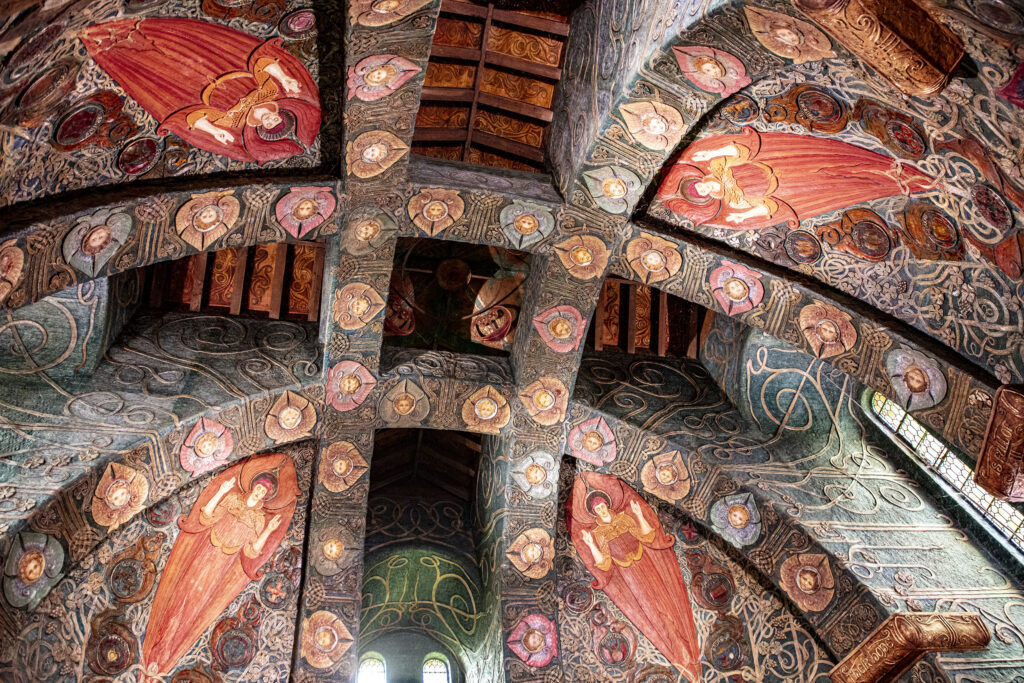
To those educated to the clean, lean, spare design of the Danish school (best seen as the Danes see it, by candlelight to add warmth) then this very fussy Victorian design will be repulsive in its cosiness and the fact that every surface is covered with a decorative motif. But for me the colour texture and the details that entrance the eye from the moment you enter carried not just the symbolism of the legends and myths of the Celtic cultures and the Anglo-Saxon world from which we spring, but also carried colour, vibrancy, life in a way that the lean clean interiors of modern day Britain fail to do. You choose what you elevate to admire by your taste, and I find that unless the space and the geometry interact in the exactly right way the spare clean lean look is hostile, cold, repellent, whereas Mary Seton Watt’s work entrances, involves and attracts the eye. The conundrum of course, which probably cannot now be resolved, is who are the faces she has used in her decorations? Are they, as I suspect, the villagers and their children who helped to create this marvellous interior?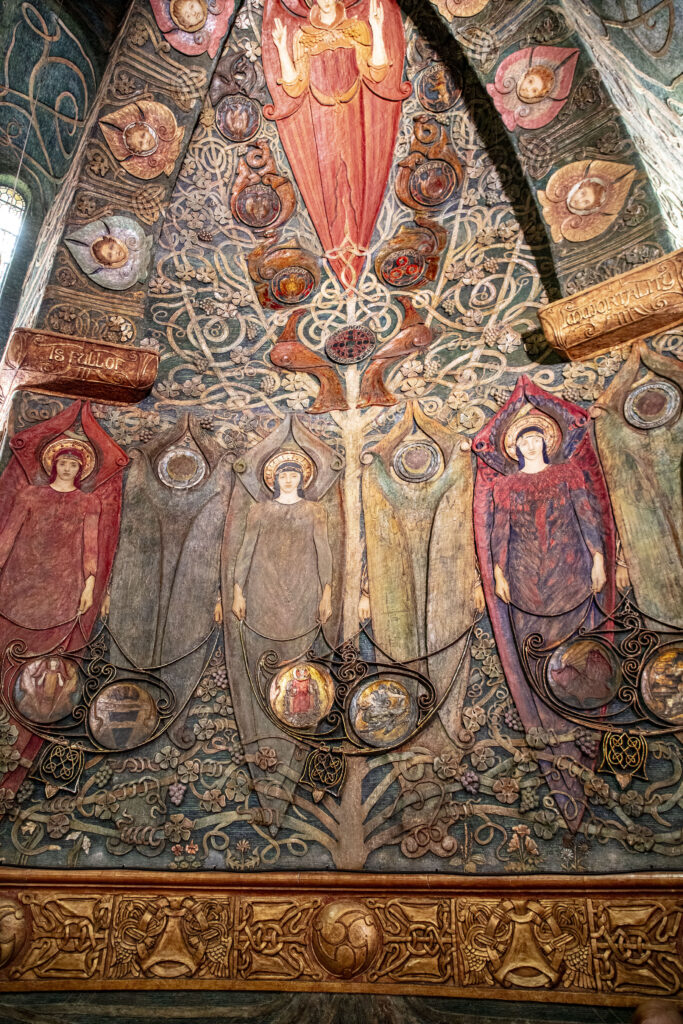
This is a funerary chapel in a heavily wooded cemetery where the remains of Mr. and Mrs. Watts lie alongside their neighbours (including the ashes of Aldous Huxley) so the decorative elements reflect not just folk legends but also the Christian ethos. Angels wings rise along the ceiling line, moral motifs decorate, and a golden line encloses. There is just room for the bier to rest centrally, benches lie around the edges of the circle, a small altar tucked into a niche in the wall. The decoration encloses the space, welcoming and embracing mourners and visitors. It is not an interior intended to overawe with God’s majesty, but rather one designed to embrace with God’s love. In that sense the decorative works are much more appropriate than an austere emptiness would have been, it is intended surely to comfort the mourners, not intimidate them with Gods majesty.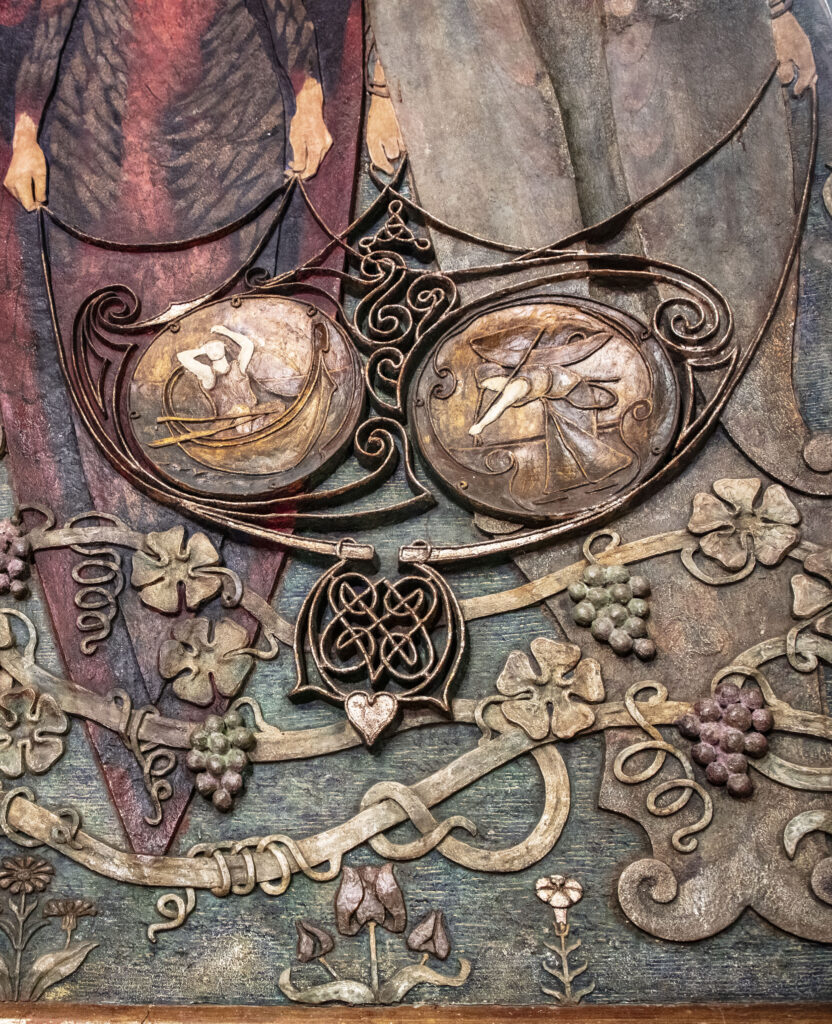
That Mary Watts, seemingly working in the shadow of her famous artist husband, was able to create an interior and a chapel as a piece of sculpture, larger than any statue of Tennyson or Rhodes her husband was sculpting, and imbue it with such love, all the while training the craftspeople who made and decorated it is something so remarkable she should be listed alongside him in the learned volumes.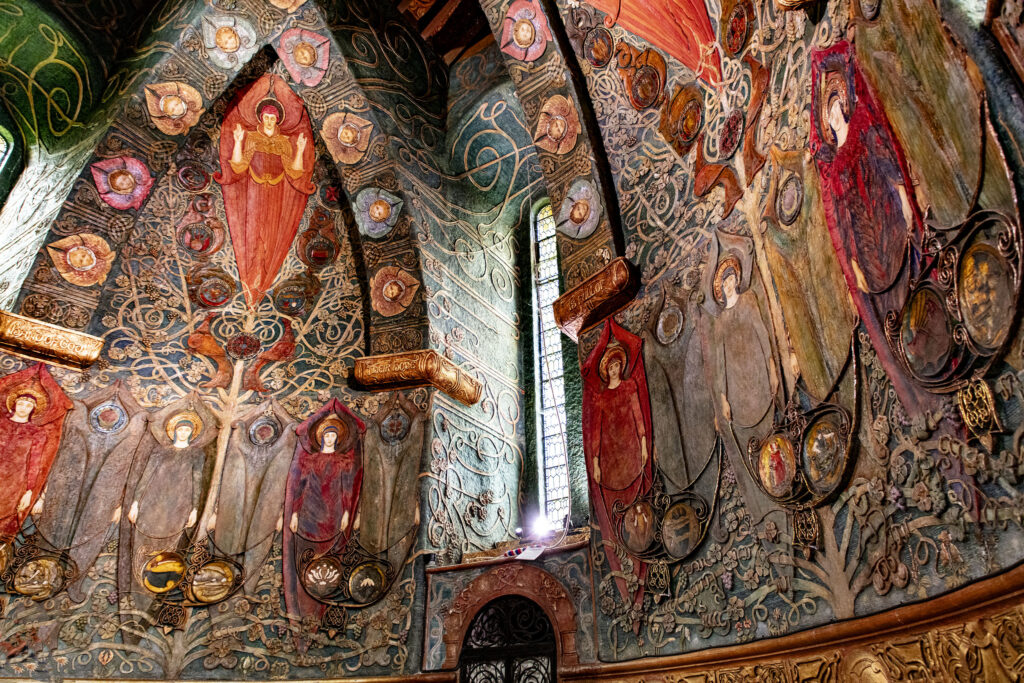
Doubly ironic that she is not listed when she (and to be fair her husband too) were leading supporters of both the Suffragist movement and the Society for the Preservation of Historic Buildings. Visit and enjoy, I shall go again

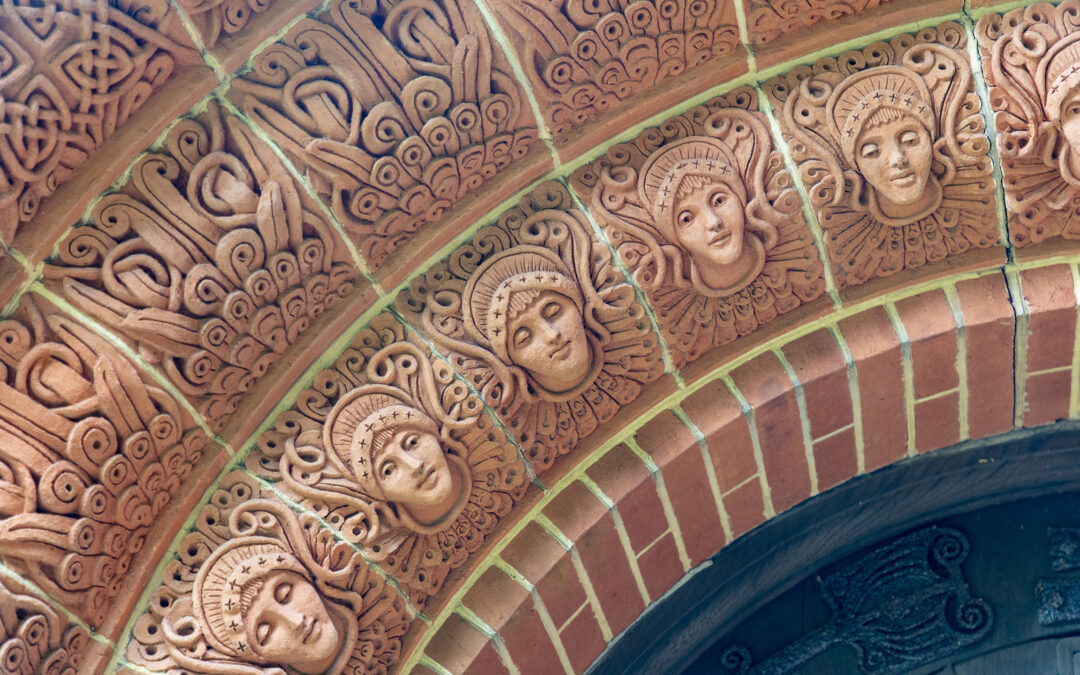
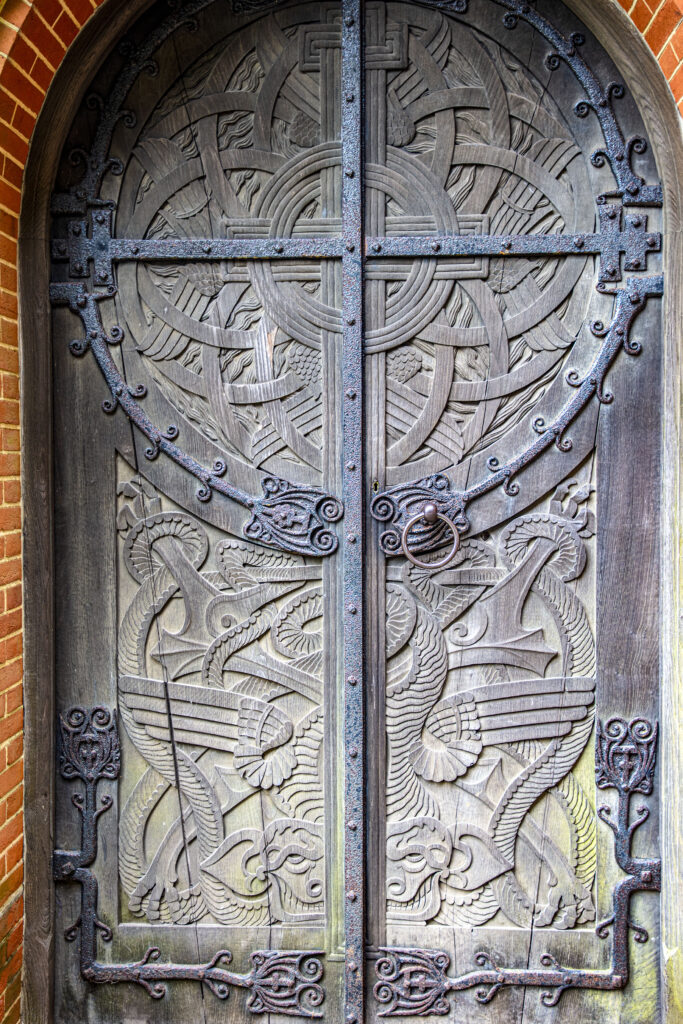
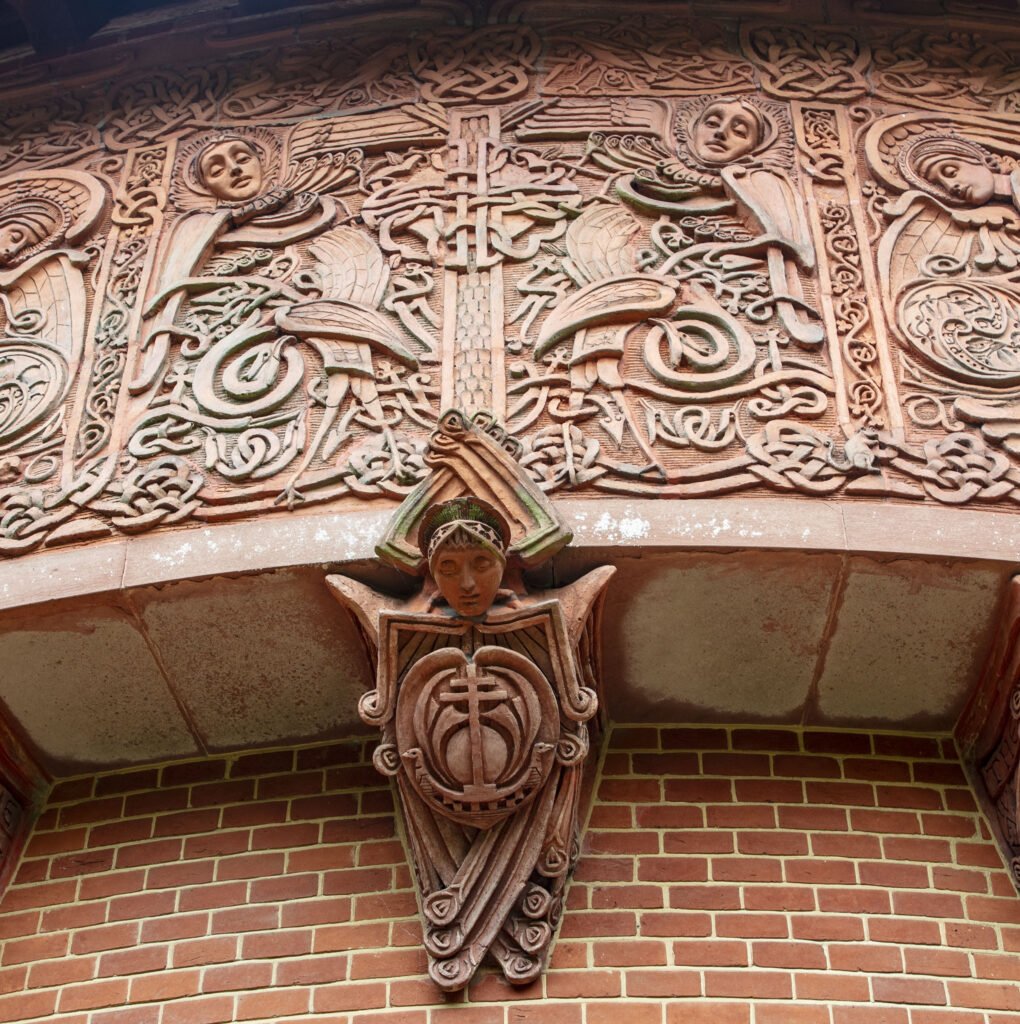
Recent Comments